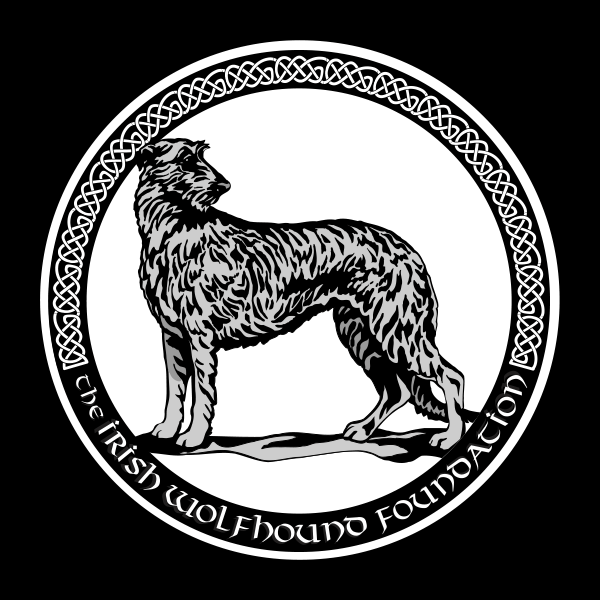In addition to providing the testing at the IWCA Specialty, Dr. Steven Roberts provided a summary of eye diseases and their occurrence in the Irish Wolfhound based on the CERF/OFA research database Unlike the open databases such as the Canine Health Information Center (CHIC) this includes all dogs tested for certification. Unfortunately, over the period from 1991-1999 there were only 511 Irish Wolfhounds tested. From 2000-2009, 750 IWs were tested and from 2010-2012 only 221 were tested. While this points to a slight upward trend, it is clear that most owners are not testing their dogs at all, let alone on an annual basis.
Problems in the IW Breed (1991-2012)
The most common lesion overall was distichaisis, a disease in which eyelashes are abnormally located on the eyelid margin. This can occur at any point in a dog’s life. Inheritance is not understood, although it appears to be more common in some breeds than others. This condition can be quite painful to the dog. Approximately 5.2% of wolfhounds tested had this problem.
Second most common was iris cysts, with about 5% of dogs affected. These are fluid filled sacs arising from the iris, to which they may remain attached or break free. They usually occur in adult dogs. Again, inheritance is unknown but these generally do not affect vision. This does not affect breeding but should be noted.
Cataracts cause opacity of the lens and can cause blindness but some occur as part of the aging process, some are caused by trauma, and some are the result of infectious or metabolic disease. The prudent approach is to assume cataracts are hereditary where no other cause is known. A large number of the cataracts found in IWs were “unspecified” but there were many in the anterior and posterior cortex. 181 dogs of the 1482 had either a cataract or an incipient cataract. This, however, covers a wide variety of categories.
Progressive retinal atrophy (PRA) is a degenerative disease of the retina that progresses to blindness. This is known to occur in Irish Wolfhounds and to be heritable in all dogs. It can be detected with an electroretinogram (not part of standard screening) prior to clinical detection. In this population of 1482 dogs, only 2 dogs with PRA were identified. A concerted effort to remove carriers from the breeding population by wolfhound owners appears to have been effective in preventing this disease, again indicating the value of routine testing. This is also the only disease that has a presumed autosomal recessive inheritance.
Another disease assumed to be inherited is retinal dysplasia. This comes in a variety of forms. The majority of affected wolfhounds seem to have retinal folds, which may resolve with maturity, may not affect vision and do not necessarily preclude breeding. A few dogs with geographic retinal dysplasia were found in the population tested. It is recommended that these dogs not be bred, although the heritability is not actually known.
Testing Results
The results for the dogs tested this year are provided below. Most dogs were normal or had findings that were minor. However one dog had a tumor. Fortunately, with early detection, the tumor was treatable. This points to the importance of regular eye testing, not just for breeding, but for the health of your dog.
| Irish Wolfhound Eye Certification Clinic Animal Eye Center; Dr. Steve Roberts, 215 W. 67th Ct, Loveland, CO Hosted at the Irish Wolfhound Specialty - 5/25/2015; Greeley, CO |
|||||||||
| Gender | Age | ||||||||
| Eye Findings | M | F | 1 | 2 | 3 | 4 | 5 | 6 | 7 |
| Normal | 7 | 7 | 3 | 4 | 4 | 1 | 0 | 2 | 0 |
| Disticha | 0 | 2 | 0 | 2 | 0 | 0 | 0 | 0 | 0 |
| Cataract | 2 | 1 | 0 | 0 | 2 | 0 | 1 | 0 | 0 |
| Corneal Dystrophy | 0 | 1 | 0 | 0 | 0 | 0 | 1 | 0 | 0 |
| Persistent Pupillary Membrane - iris to iris | 0 | 1 | 0 | 0 | 1 | 0 | 0 | 0 | 0 |
| Iris Melanoma | 1 | 0 | 0 | 0 | 1 | 0 | 0 | 0 | 0 |
| Lens sclerosis (normal aging change) | 0 | 1 | 0 | 0 | 0 | 0 | 0 | 0 | 1 |
| Total | 10 | 13 | 23 | ||||||
Thanks again to Dr. Roberts of the Animal Eye Center in Greeley and his staff, Rachel Fulton and Brenda Roberts for running the eye testing. They were an amazing team. And thanks also to my excellent volunteers Ron Rutter, Sally Love and Beth Stobart who held dogs.


